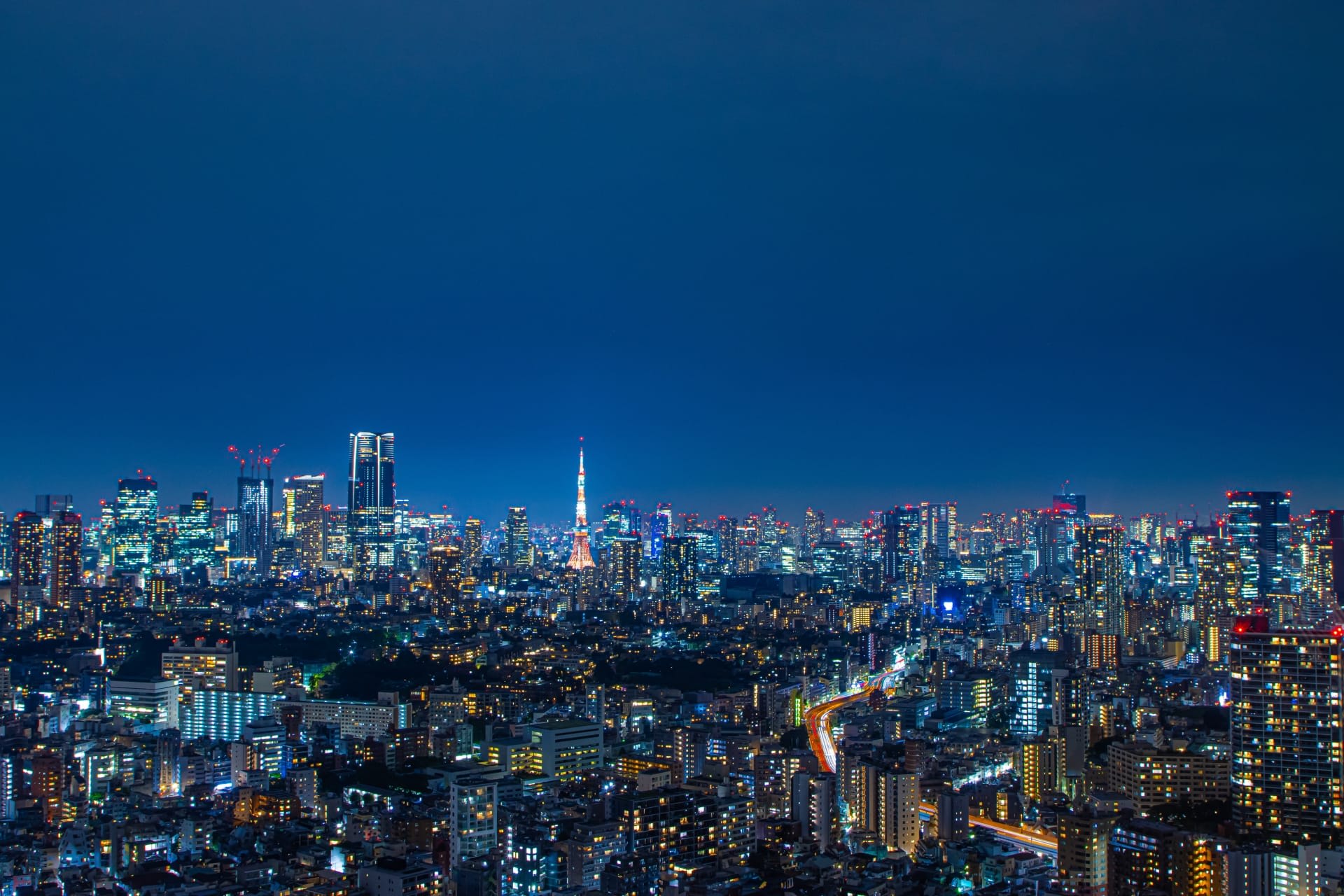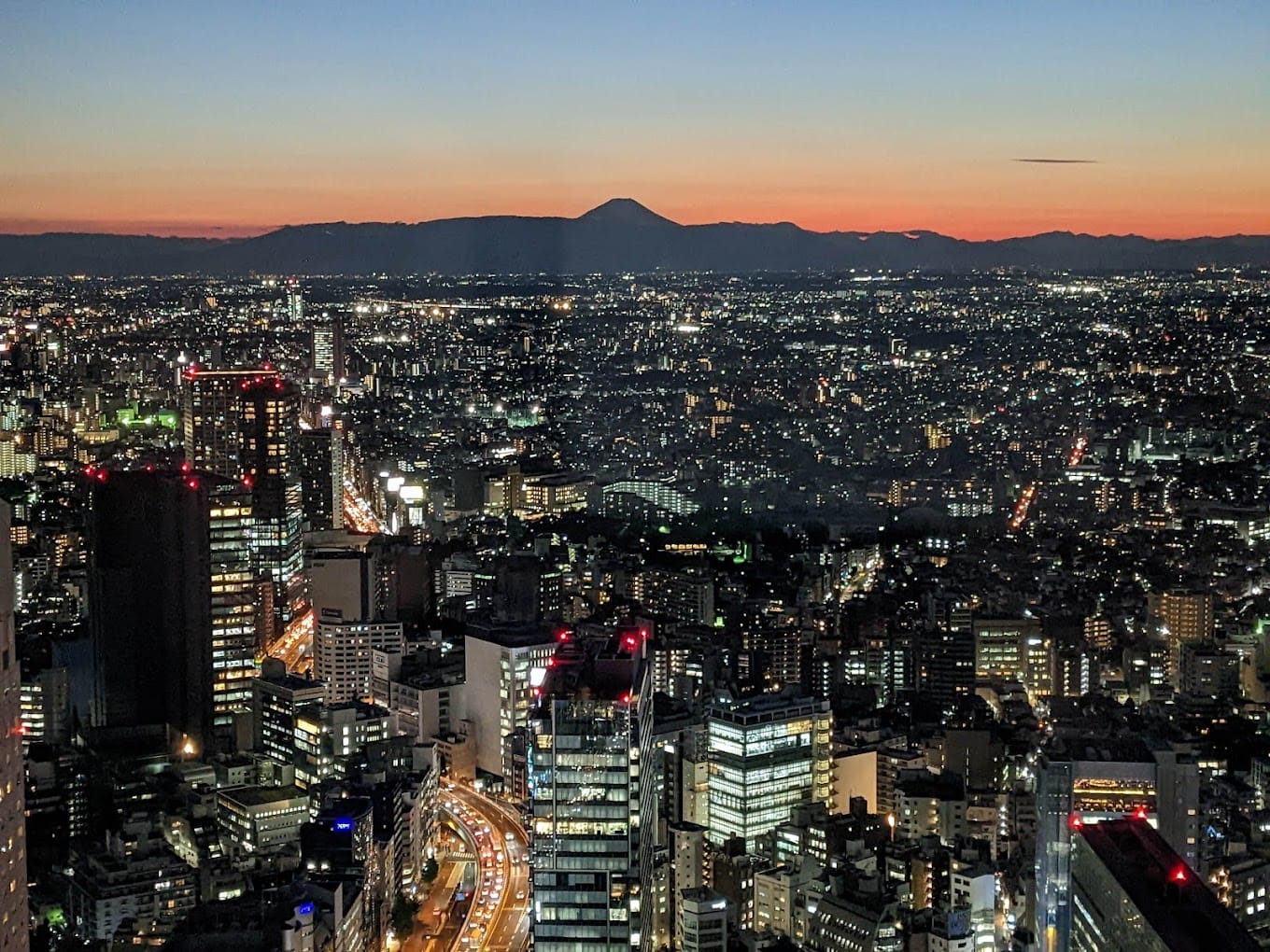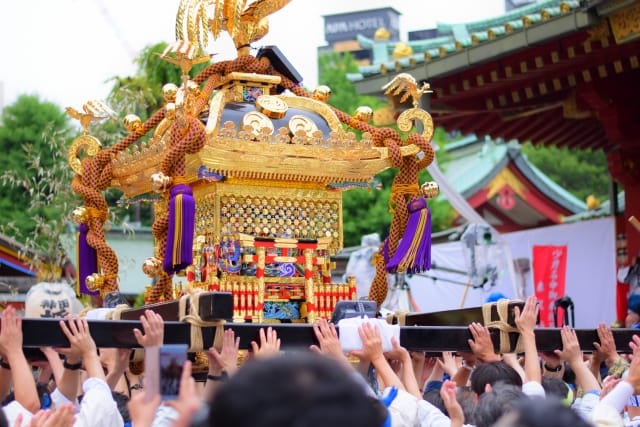One Day Trip in Tokyo: 5 Exciting Itineraries for Every Season
This time I wrote an article about Tokyo, a city I was born and raised. And I updated this article in January 2025 to incorporate my findings from this research, along with the latest information for 2025.
Another reason for updating the article is the growing interest in tours that allow visitors to safely and deeply experience Tokyo. Because Tokyo is a city that continues to develop at a dizzying pace and in complex ways, tourists visiting for the first time find it extremely difficult to discover the truly excellent spots beloved by locals.
This is why food tours led by knowledgeable local guides who know Tokyo inside and out have been gaining popularity, as they take visitors through Tokyo's maze of establishments.
In fact, Magical Trip's tour, which ranked #1 among all tours on Tripadvisor, has been receiving numerous applications.

If you want to experience authentic izakayas beloved by Shibuya locals, try the "Shibuya Bar Hopping Night Tour in Tokyo," which is ranked #2 on Magical Trip. A knowledgeable local guide who knows Shibuya inside and out will take you to spots where you can enjoy genuine Japanese cuisine.
And if you want to make the most of Tokyo's nightlife, you absolutely must join the "Tokyo Bar Hopping Night Tour in Shinjuku," which is rated #1 on Tripadvisor. You can safely explore Shinjuku's historic retro drinking districts and Kabukicho, the largest entertainment district in Asia, with an expert guide who knows Shinjuku thoroughly.
We hope you'll have a wonderful time experiencing everything Tokyo has to offer by joining a Magical Trip tour!
Introduction
As someone born and raised in Tokyo and still living here, I'd like to introduce you to ways to enjoy the charm of this city in just one day.
I've seen various aspects of this city over the years. The appeal of Tokyo is that you can have completely different experiences in a single day, such as eating fresh sushi at Tsukiji Market in the morning and watching the sunset over the cityscape from Roppongi Hills in the evening.
By taking a 30-minute train ride, you can experience a feeling of traveling through time, from the traditional townscapes of downtown to modern skyscrapers. The changing of seasons is also vivid, and I still fondly remember cherry blossom viewing in Ueno Park in spring and autumn leaf viewing on Mt. Takao, even though I've now moved to Osaka.
Using efficient public transportation, you can visit surprisingly many places in just one day.
In this article, based on my experience, I'll introduce five fulfilling itineraries, from year-round courses to seasonal recommended routes. Each course will allow you to fully enjoy Tokyo's diverse charms.
Now, let's enjoy Tokyo with the perfect one day trip itinerary for you!
Table of Contents
・The Appeal and Points to Note for One Day Trips in Tokyo
・Convenient Transportation for Tokyo Sightseeing
・Itinerary 1: Classic Tokyo Sightseeing (Recommended Year-round)
・Itinerary 2: Enjoying Tokyo's Nature and Urban Culture (Recommended Year-round)
・Itinerary 3: Enjoying Tokyo's Old Townscapes (Recommended Year-round)
・Itinerary 4: Tokyo Sightseeing to Enjoy Spring Cherry Blossoms
・Itinerary 5: Tokyo Sightseeing to Enjoy Autumn Foliage
・Frequently Asked Questions about One Day Trips in Tokyo
The Appeal and Points to Note for One Day Trips in Tokyo

The charm of Tokyo lies in its diversity.
On holidays, I enjoy experiencing completely different faces of Tokyo in a single day, such as eating fresh sushi in Tsukiji in the morning, enjoying pop culture in Harajuku at noon, and savoring an adult atmosphere in Roppongi at night.
Tokyo's transportation system is highly developed, allowing you to visit many places in one day. For example, using the JR Yamanote Line, you can circle Tokyo's main spots in about an hour.
However, there are also points to note. Popular spots can get very crowded, especially on weekends and holidays. My recommendation is to visit popular spots early in the morning. For instance, Sensoji Temple opens from 6 AM depending on the season, so if you wake up early and visit, you can enjoy a relaxed worship experience.
You also need to be mindful of the weather. Summers can be very hot and humid, so frequent hydration and rest are necessary.
Convenient Transportation for Tokyo Sightseeing

To efficiently sightsee in Tokyo, using public transportation is essential. I'll introduce the modes of transportation I use almost daily. By skillfully combining these, you can fully enjoy Tokyo's various charms in one day.
JR Yamanote Line
The JR Yamanote Line is a convenient line that connects Tokyo's main tourist spots in a loop. For example, you can enjoy various faces of Tokyo in a day, such as visiting museums in Ueno in the morning, shopping in Harajuku at noon, and enjoying dinner in Shibuya at night.
The Yamanote Line completes a full circle in about an hour, so you can enjoy Tokyo's cityscape just by riding without worrying about time.
Tokyo Metro
The Tokyo Metro is a subway network that covers detailed areas.
I find it particularly useful for moving between tourist spots. For example, the Tokyo Metro Ginza Line is convenient when moving from Asakusa to Ginza.
Also, using a Tokyo Metro one-day pass allows you to tour Tokyo economically. I often use this one-day pass when guiding friends who come to visit Tokyo, efficiently showing them Tokyo's famous spots.
Website: https://www.tokyometro.jp/lang_en/ticket/value/1day/index.html
Toei Bus
Toei buses are convenient for accessing places where the subway doesn't reach.
Also, Toei buses are cheaper than the subway, so they're recommended for those who want to sightsee on a budget. However, keep in mind that there's a possibility of getting caught in traffic jams, so I recommend using them with plenty of time to spare.
Taxi
Tokyo's taxis are safe, clean, and the drivers are kind. I often use them especially late at night or when I have large luggage.
However, they're more expensive compared to other modes of transportation, so I recommend using them strategically.
Now, from the next section, I'll introduce specific model courses.
Itinerary 1: Classic Tokyo Sightseeing (Recommended Year-round)

This course is a standard route that condenses Tokyo's charms. It's a course I often guide friends and relatives on when they come to visit. You can enjoy various faces of Tokyo in one day, and it's recommended for both first-time visitors to Tokyo and repeat visitors.
Course Overview
・Order of movement: Tsukiji/Toyosu Market → Sensoji Temple → Tokyo Skytree → Shibuya
・Time required: About 10 hours (7:00 AM - 5:00 PM)
・Main modes of transportation: Subway, water bus, walking
・Recommended season: Year-round
Morning Food Tour at Tsukiji/Toyosu Market
Tsukiji/Toyosu Market, bustling with activity from early morning, is an excellent starting point for Tokyo sightseeing. You can experience Tokyo's food culture firsthand while enjoying fresh seafood dishes.
Tsukiji Outer Market
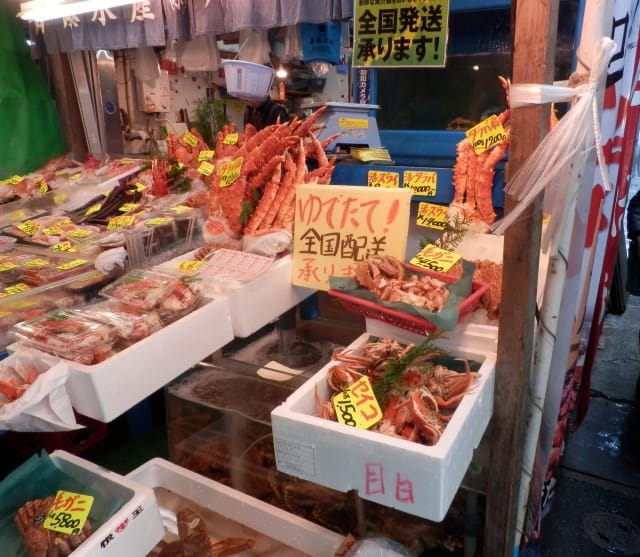
Tsukiji Outer Market has been one of my favorite places since I lived in Tokyo. Here, you can enjoy fresh seafood bowls and sushi from early morning.
There are also many shops in the market selling professional-grade cooking utensils and tableware. Tokyo's kitchen items are of high quality and perfect for souvenirs. I always have my visiting friends buy Japanese-style chopsticks and rice bowls here to take home.
Toyosu Market Tour
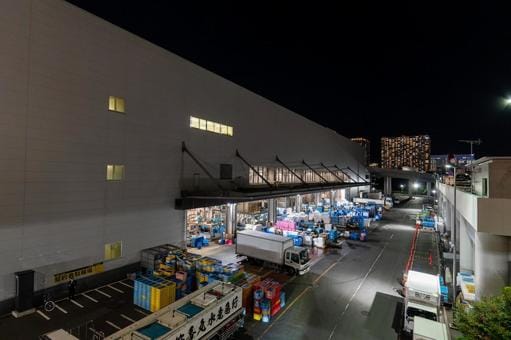
Toyosu Market is a new market that relocated from Tsukiji in 2018. Here, you can observe actual tuna auctions from the observation deck. When I first visited for a tour, I was overwhelmed by the speed and energy of the auctions.
After the tour, I recommend enjoying fresh seafood at one of the restaurants in the market. My recommendation is the seasonal seafood bowl. A bowl lavishly topped with fresh seafood caught that day is truly a blissful dish.
Sensoji Temple and Surrounding Area
Asakusa is one of the places where you can feel Tokyo's downtown culture the most. You can enjoy sightseeing and shopping while experiencing the atmosphere of good old Japan.
Kaminarimon Gate
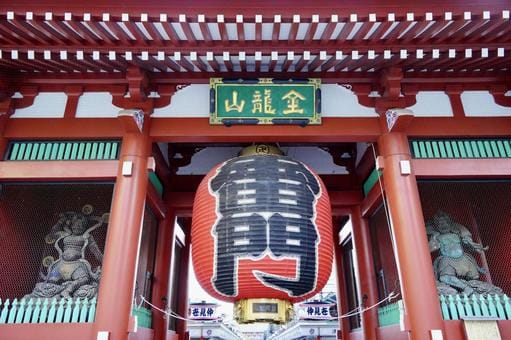
Kaminarimon Gate, the symbol of Asakusa, is impressive with its giant lantern. Every time friends from overseas visit, I take commemorative photos here. Standing under the lantern gives a real sense of being in Japan.
If you visit early in the morning, you can take photos leisurely without crowds. The Kaminarimon Gate illuminated by the morning sun has a particularly exceptional beauty.
Nakamise Street

After passing through Kaminarimon Gate, Nakamise Street continues for about 250 meters. With about 90 shops lined up here, you can enjoy various stores from long-established shops dating back to the Edo period to the latest souvenir shops.
My recommendation is to enjoy street food like ningyoyaki and senbei. In particular, the hot ningyoyaki is exquisite. The sweetness of the red bean paste inside and the fragrant taste of the outer castella dough are in perfect balance, and I often end up eating several.
However, since you've probably eaten a lot at Tsukiji or Toyosu in the morning, I recommend enjoying snacks and light meals here. Enjoy various tastes little by little, consulting with your stomach.
Sensoji Temple Main Hall
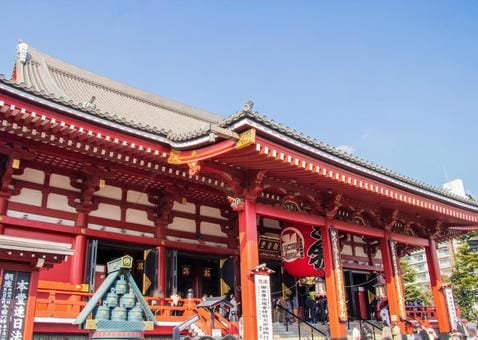
Sensoji Temple is known as the oldest temple in Tokyo. I always visit here for the New Year's first prayer. The large incense burner in front of the main hall is always crowded with worshippers.
There's a saying that applying the incense smoke to your body brings good health, so I always bathe my whole body in this smoke every time I visit.
Also, Sensoji Temple's fortune slips are available in English, so I recommend them for foreign visitors as well.
Website: https://www.senso-ji.jp/english/
For those who want to enjoy the living traditions and Japanese culture of Asakusa, try joining a cultural tour with a local guide. Since you can visit tourist attractions while listening to explanations from guides who know Asakusa inside and out, you can enjoy sightseeing twice as much.
・Asakusa Cultural Walk & Matcha Making Tour
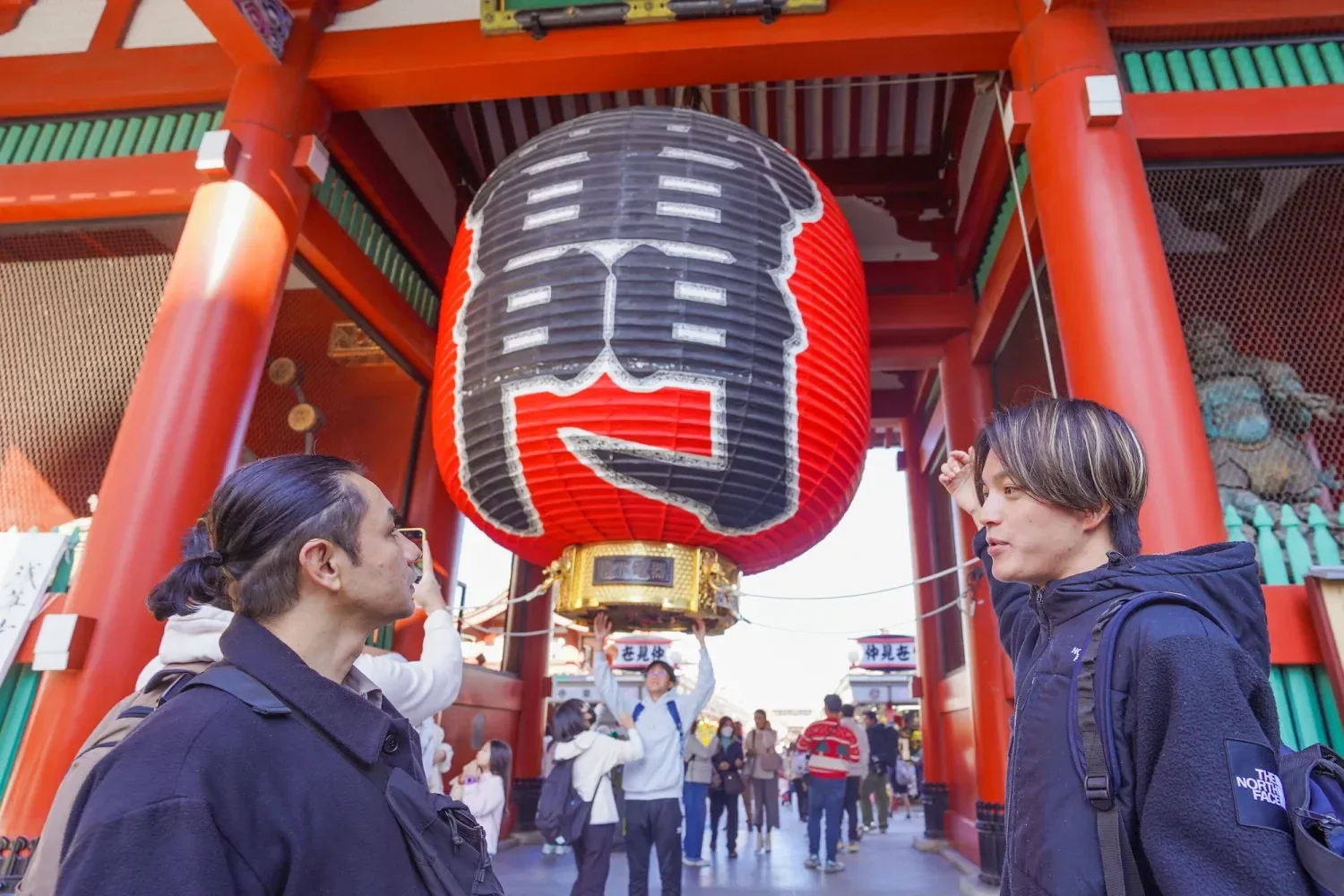
Tokyo Skytree Area
Moving a bit from Asakusa, we head to Tokyo Skytree, Tokyo's new landmark. Here, you can enjoy the latest aspect of Tokyo.
Tokyo Skytree

Tokyo Skytree, standing at 634 meters, is the world's tallest self-supporting tower. I still remember the excitement when I first visited. From the observation deck, you can enjoy a 360-degree panoramic view of Tokyo, and on clear days, you can even see as far as Mount Fuji.
The experience of ascending rapidly in the high-speed elevator is also thrilling.
You can also enjoy the night view of Tokyo illuminated at night. I particularly like the time from dusk to night.
Website: https://www.tokyo-skytree.jp/en/
Solamachi
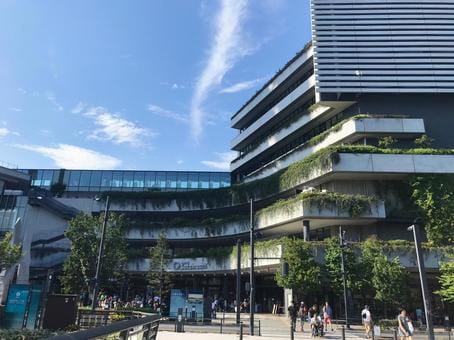
At the foot of Skytree is a large commercial facility called Solamachi. Here, famous Japanese souvenir brands are gathered.
If you're hungry, you can also enjoy a light meal at one of the restaurants in Solamachi. There are restaurants of various genres from Japanese to Western cuisine.
Website: https://www.tokyo-solamachi.jp/en/
Sumida Park
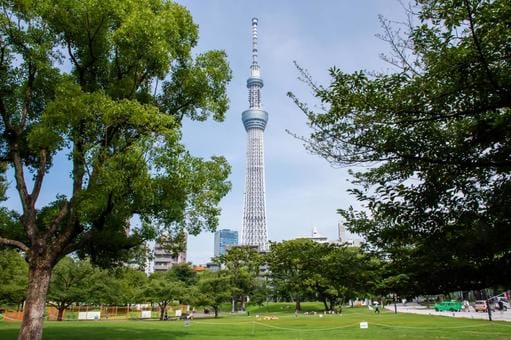
Near Skytree is Sumida Park, a lovely spot where you can enjoy a walk along the riverside promenade. I often walk here after work. Walking slowly while looking at the flow of the river helps me forget the hustle and bustle of the city and relax.
Also, you can take wonderful photos with Skytree in the background from here. Especially at dusk, the color of the sky and the silhouette of Skytree create a beautiful contrast, making it an excellent spot for photography.
It's also famous as a cherry blossom spot in spring, with many cherry trees in full bloom. During the cherry blossom season, many people enjoy hanami parties here. I also look forward to having hanami with my friends here every year.
By joining a Magical Trip tour, you can cycle along the Sumida River while viewing Tokyo Skytree. Since all the procedures for renting bicycles, selecting routes, and choosing tourist spots can be left to guides who know Tokyo thoroughly, you can enjoy sightseeing without any stress.
・3-Hour Tokyo city Highlights Sunset Bike Tour

Shibuya
The finale of Tokyo sightseeing is Shibuya, known as the youth town. Here, you can fully enjoy the modern face of Tokyo.
Scramble Crossing

When you think of Shibuya, the first thing that comes to mind is probably this scramble crossing. Known as the busiest intersection in the world, it's worth experiencing at least once.
When the traffic light turns green, the sight of people flooding into the intersection from all directions is overwhelming. Letting yourself go with this wave of people is a unique Tokyo experience.
You can also observe the intersection from above at the observation deck of MAGNET by SHIBUYA109.
Don't miss the digital advertisements and giant screens around the intersection. These ads always broadcast the latest information, allowing you to feel Tokyo's trends firsthand.
Hachiko Statue

In front of Shibuya Station stands the bronze statue of Hachiko, the loyal dog. This statue was erected in memory of Hachiko, a faithful dog who waited for his owner for years. When I learned about this touching story, I was moved by the depth of the bond between humans and animals.
The Hachiko statue is also famous as a meeting spot. I often use it as a meeting place with friends. Looking around, you can see many people waiting for someone, which is a heartwarming sight.
SHIBUYA SKY
Source: Google Map by Meg A.Y.
SHIBUYA SKY, the rooftop observation facility of Shibuya Scramble Square, is a new spot that opened in 2019. From here, you can enjoy a 360-degree panoramic view of Shibuya. When I first visited, I was breathless at the overwhelming view.
I especially recommend visiting at dusk. You can see the color of the sky changing moment by moment and the city gradually lighting up. You can also see Tokyo Skytree and Tokyo Tower, allowing you to enjoy Tokyo's major landmarks at once.
Center Street
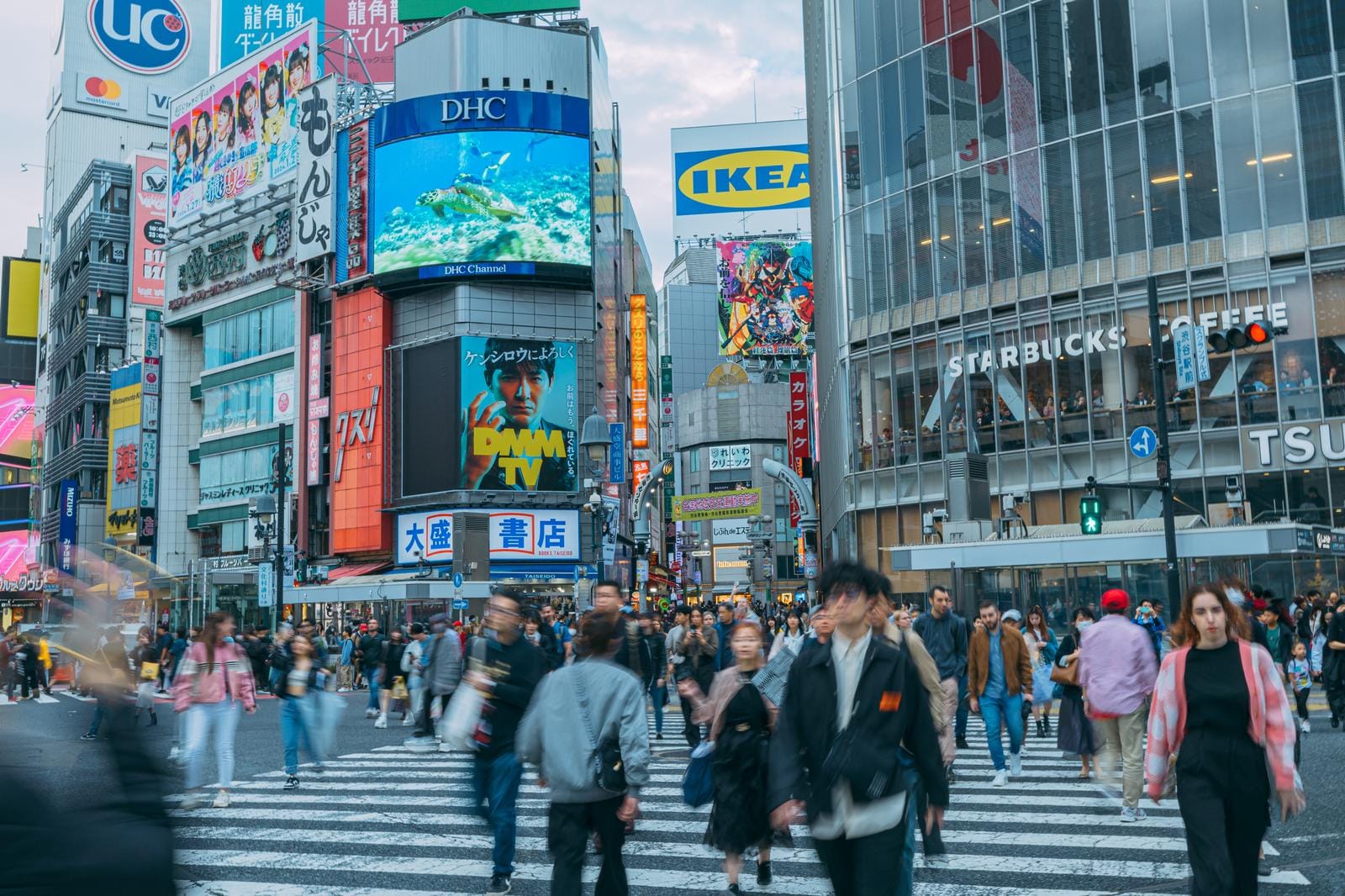
Shibuya Center Street is a street lined with shops at the forefront of youth fashion. It's a place I often visited during my student days, and I still fondly remember it. Just walking here, you can feel Tokyo's street fashion firsthand.
Various brand shops and unique secondhand clothing stores are lined up, and window shopping alone is enjoyable enough. There are also many products reflecting the latest Japanese pop culture, making it ideal for souvenir hunting.
Itinerary 2: Enjoying Tokyo's Nature and Urban Culture (Recommended Year-round)

While Tokyo has a strong image of a metropolis with towering skyscrapers, it also has a nature-rich side. On this course, you can enjoy both the hustle and bustle of the city and the tranquility of nature, as well as Tokyo's traditional and modern culture all at once.
Course Overview
・Order of movement: Meiji Shrine → Harajuku → Shibuya → Roppongi Hills → Tokyo Tower
・Time required: About 9 hours (10:00 AM - 7:00 PM)
・Main modes of transportation: JR Yamanote Line, subway, walking
・Recommended season: Year-round
Meiji Shrine and Harajuku
Meiji Shrine
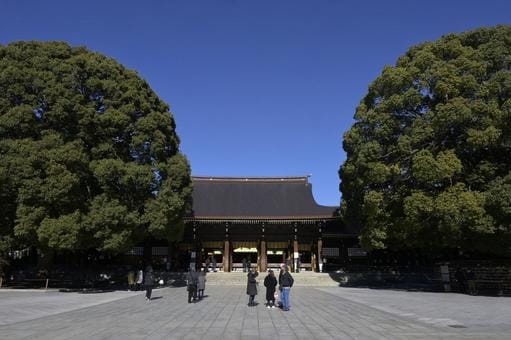
Meiji Shrine is a quiet space surrounded by a vast forest, despite being in the center of Tokyo. I often visit here when I feel stressed from work. Known as an oasis in the city, this place is ideal for calming the mind.
As you pass through the large torii gate, suddenly the surrounding noise disappears, and you're enveloped in a sense of being in a forest. I've always been moved by this sudden change in the air at this moment. Walking along the path surrounded by about 100,000 trees naturally calms your heart.
At the main shrine, you can experience traditional Japanese worship methods. By following the custom of two bows, two claps, and one bow, you'll feel like you've touched a part of Japanese culture.
Harajuku Takeshita Street

Right next to Meiji Shrine is Harajuku, known as a hub of youth culture. Its center, Takeshita Street, is always bustling with many young people. It's a place I often visited during my student days, and even now, its vibrant atmosphere remains unchanged.
On this street, you can enjoy photogenic sweets like colorful crepes and cotton candy. My recommendation is the chocolate banana crepe. The combination of sweet cream and fresh banana is exquisite and perfect for eating while walking.
There are also many shops selling unique fashion items and accessories. I particularly liked looking at T-shirts and accessories reflecting Tokyo's pop culture. Such items are also popular as Japanese souvenirs.
Cat Street

A short walk from Takeshita Street leads you to Cat Street, lined with stylish secondhand clothing stores and miscellaneous goods shops. This street has a calm atmosphere in contrast to Takeshita Street, and I often enjoy leisurely shopping here.
One of the attractions of this area is that you can check out Japan-limited items from brands around the world. There are also many cafes along the street, perfect for taking a break.
Shibuya Scramble Crossing and Surroundings
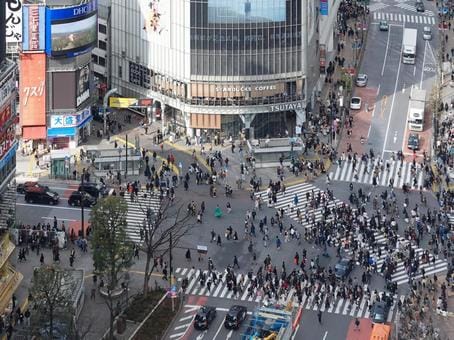
As introduced in Itinerary 1, Shibuya has many attractions including the Scramble Crossing, Hachiko statue, SHIBUYA SKY, and Center Street. I particularly like the view from SHIBUYA SKY. The panoramic view of Tokyo's cityscape is breathtaking.
There are many commercial facilities in Shibuya, and many restaurants are located within them. For lunch time, I recommend enjoying a meal at one of these restaurants.
If you want to enjoy Shibuya at night, try joining Magical Trip's Shibuya bar hopping tour. Guides who know Shibuya inside and out will take you to spots where you can enjoy exquisite food and drinks that only locals know about.
・Shibuya Bar Hopping Night Tour in Tokyo

Roppongi Hills and Tokyo Tower
Next, we head to Roppongi, known as Tokyo's high-end area.
Roppongi Hills Observation Deck

Tokyo City View, the observation deck at Roppongi Hills, is the perfect place to enjoy Tokyo's night view.
Particularly impressive is the outdoor observation deck called Sky Deck. From here, you can enjoy a 360-degree view of Tokyo. The night view enjoyed while feeling the wind has a different charm from indoors. Every time I see this scenery, I'm moved by the beauty of Tokyo's night view.
Website: https://visit.mam-tcv-macg-hills.com/category/TCV/
Mohri Garden

Mohri Garden, located a bit away from the hustle and bustle of Roppongi Hills, is a place where you can feel tranquility despite being in the center of the city. I often calm my mind here after the stimulating experience from the observation deck.
The garden contains elements of Japanese gardens condensed into a small space, including a stream, pond, and stone lanterns. The garden illuminated at night is particularly fantastic, and the scene of a Japanese garden floating against the backdrop of skyscrapers is impressive, symbolizing the fusion of old and new Tokyo.
In spring, cherry blossoms bloom beautifully, offering a particularly stunning view. The contrast between the fully bloomed cherry blossoms and the skyscrapers reflected in the pond is a sight unique to Tokyo.
Tokyo Tower

The last stop is Tokyo Tower, an iconic structure of Tokyo. Tokyo Tower, which I've loved since I was a child, is still a special existence for me.
Tokyo Tower illuminated at night is particularly beautiful and perfect for photography.
If you have time, I recommend enjoying the view from the observation deck as well. The view from Tokyo Tower has a different charm from that of Skytree. In particular, the view of Tokyo's cityscape from the retro-style observation deck evokes a sense of nostalgia.
Website: https://en.tokyotower.co.jp/
Itinerary 3: Enjoying Tokyo's Old Townscapes (Recommended Year-round)
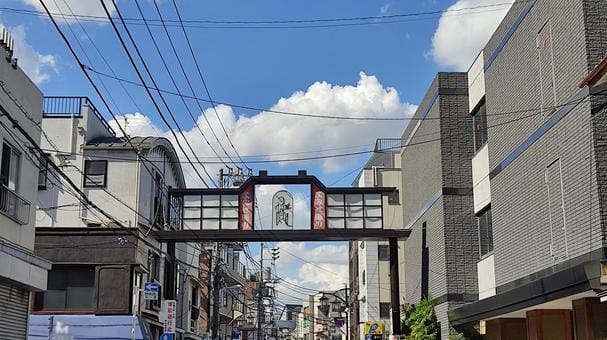
While Tokyo has a strong image as a modern city, there are actually many townscapes that retain the old-fashioned atmosphere.
On this course, you can enjoy such good old aspects of Tokyo.
Course Overview
・Order of movement: Yanaka Ginza → Ueno → Nihonbashi → Tokyo Station
・Time required: About 7 hours (11:00 AM - 6:00 PM)
・Main modes of transportation: JR Yamanote Line, subway, Yurikamome, walking
・Recommended season: Year-round
Yanaka Ginza and Ueno
Yanaka Ginza Shopping Street
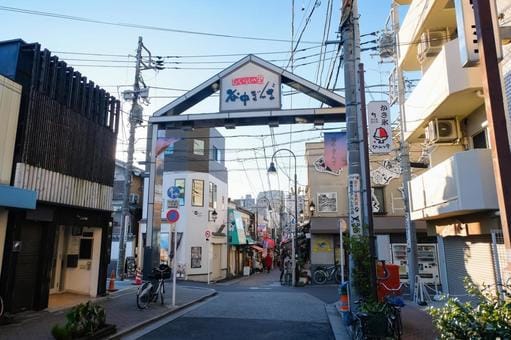
Yanaka Ginza Shopping Street is one of the places where you can feel Tokyo's downtown atmosphere the most.
The charm of this shopping street is, above all, its retro atmosphere. Signs and shop fronts reminiscent of old Tokyo are lined up, giving you a sense of time travel.
My recommendation is the beef croquette from "Niku no Sato". Walking through the shopping street while munching on a freshly fried croquette is a unique enjoyment of this town.
Also, the arch of the shopping street with "Yanaka Ginza" written on it is a popular photo spot. The view of the shopping street seen through the arch is truly the essence of Tokyo's downtown.
Website: https://www.yanakaginza.com/
Yanaka Cemetery
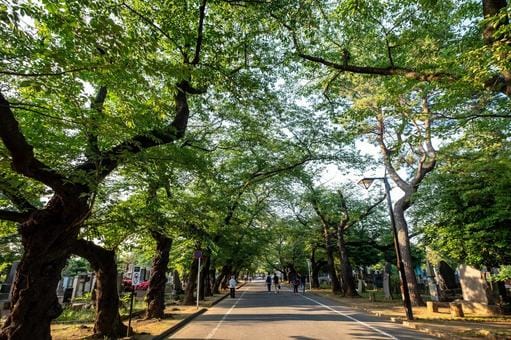
Yanaka Cemetery is a quiet place where you can feel Japan's burial culture. I often choose this as my walking course. The vast grounds contain many graves of famous people from the Meiji era, allowing you to feel Tokyo's modern history.
It's also known as a cherry blossom spot in spring. Walking under the fully bloomed cherry blossoms envelops you in a strange atmosphere where tranquility and beauty are in harmony. I look forward to enjoying cherry blossom viewing here every year.
Ueno Park
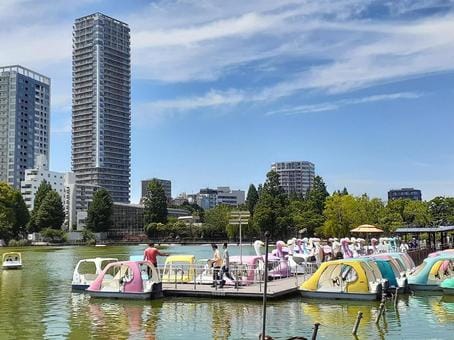
Ueno Park is a place of relaxation for citizens, with vast green space despite being in the center of Tokyo. You can walk here from Yanaka Ginza.
There are fountains and ponds in the park where you can enjoy picnics and walks in a nature-rich environment. Shinobazu Pond, in particular, is famous for its lotus flowers. In summer, lotus flowers bloom all over the pond, and their beauty is captivating.
Ueno Park is also famous as a cherry blossom spot. In spring, when about 1,000 cherry trees bloom, many people enjoy hanami.
If you have time, I recommend visiting the Tokyo National Museum or Ueno no Mori Art Museum in the park. These are wonderful places to experience Tokyo's art and history.
Website: https://www.kensetsu.metro.tokyo.lg.jp/jimusho/toubuk/ueno/en_index.html
Ueno Zoo

Ueno Zoo is known as Japan's oldest zoo. It's a place of memories where my parents often took me when I was a child.
The biggest attraction of this zoo is undoubtedly the pandas. I still can't forget the excitement when I first saw a panda. I found myself staring at their adorable figure for a long time.
At Ueno Zoo, you can observe the ecology of various animals. Animals from around the world live here, including gorillas, lions, and penguins.
Website: https://www.tokyo-zoo.net/zoo/ueno/
Ameyoko
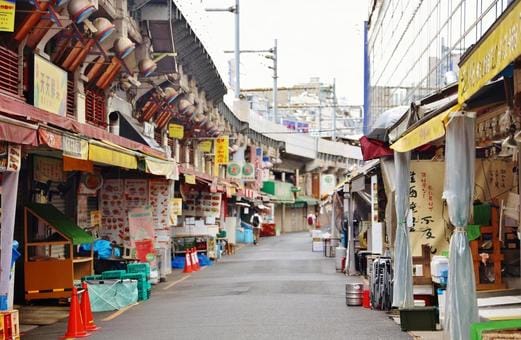
Ameyoko, near Ueno Station, is a lively market that has continued since after World War II. It's a place I often visited during my student days in search of cheap and delicious food.
The characteristic of Ameyoko is its bustling atmosphere. Energetic calls from shopkeepers echo from stores lined up on both sides of the street. The sight of various ingredients like fresh seafood, fruits, and dried foods crammed together is overwhelming.
Ameyoko is also characterized by many military-style goods shops and multinational restaurants. For lunch time, I recommend enjoying these multinational cuisines. Being able to enjoy flavors from around the world in Tokyo is a unique charm of Ameyoko.
If you want to enjoy Tokyo's retro towns, try exploring them with a local guide who knows Tokyo thoroughly. When you sightsee while having locals explain the traditions and history to you, your enjoyment of the tour will be more than doubled!
・Yanaka Historical Walking Tour in Tokyo's Old Town
・All-You-Can-Drink Bar Hopping Tour in Ueno
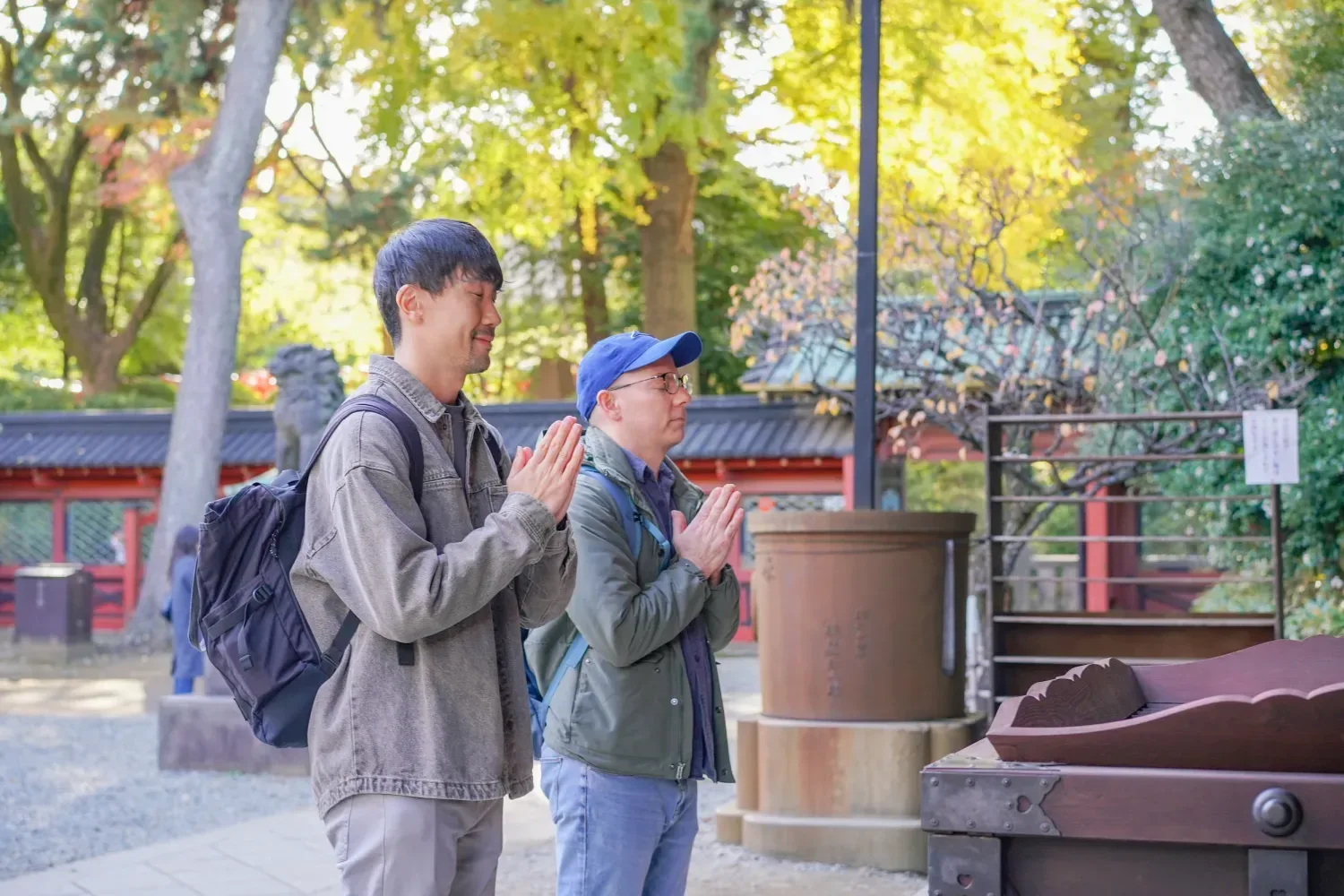
Nihonbashi and Tokyo Station
Nihonbashi

Nihonbashi is a historic district that has flourished as the center of Japan since the Edo period.
Nihonbashi itself is a stone arch bridge built in 1911. This bridge is where Japan's road origin point is located, serving as the starting point for roads across the country. Standing on the bridge gives you a sense of being at the center of Japan's transportation, which has continued since the Edo period.
Many long-established Japanese confectionery shops and Japanese restaurants are lined up around the bridge.
There are also many historical buildings remaining around Nihonbashi. The cityscape where Western-style architecture from the Meiji era coexists with traditional Japanese-style architecture is interesting, seemingly telling the history of Tokyo's modernization.
Bank of Japan Headquarters
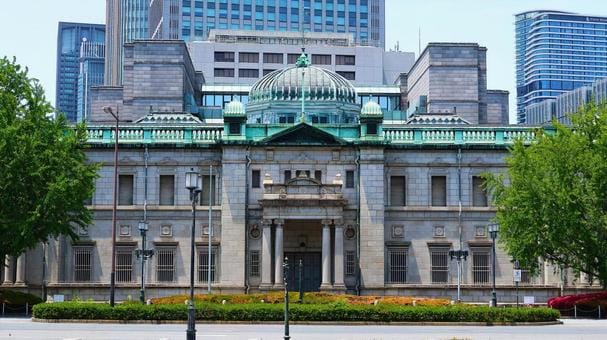
The Bank of Japan Headquarters is a substantial building constructed in the Meiji era. I still remember being overwhelmed by its dignified appearance when I first saw this building.
The exterior adopts a Neo-Baroque style, symbolizing Tokyo's modernization as a Western-style building.
Inside the building is the Currency Museum, which is free to enter. Here, you can learn about the history of Japanese currency. I found the display of Edo period koban (oval gold coins) and clan notes particularly interesting. Seeing these gives you a real sense of how Japan's economic system has developed.
Also, in the underground vault display, you can experience the weight of 100 million yen. When you actually lift it, you're surprised by its weight and at the same time, it makes you think about the value of money.
Website: https://www.imes.boj.or.jp/cm/english/
Tokyo Station Marunouchi Building

The Tokyo Station Marunouchi Building is a historical building completed in 1914.
Through a large-scale preservation and restoration work in 2012, the station building regained its original appearance. The illuminated appearance at night is particularly beautiful, and many people visit as a photo spot. I often stop here on my way home from work to admire the beautiful station building.
Inside the station, there's "Tokyo Character Street" where shops selling famous Japanese character goods are lined up.
Here, you can find souvenirs of Japanese representative characters like Pokemon and Hello Kitty. I often use this when buying souvenirs for overseas friends.
Also, at the restaurant street "Tokyo Station First Avenue" inside the station, you can enjoy various Japanese cuisines. In particular, the Tokyo Station-limited ekiben (station lunch boxes) are popular and perfect for concluding your trip. This bento box filled with Tokyo's specialty dishes should be a wonderful memory of your Tokyo sightseeing.
Itinerary 4: Tokyo Sightseeing to Enjoy Spring Cherry Blossoms

When thinking of spring in Tokyo, cherry blossoms come to mind. When I lived in Tokyo, my heart would leap every year as the cherry blossom season approached. On this course, you can fully enjoy the spring of Japan by visiting Tokyo's representative cherry blossom spots.
Course Overview
・Order of movement: Ueno Park → Chidorigafuchi → Meguro River
・Time required: About 7 hours (11:00 AM - 6:00 PM)
・Main modes of transportation: JR Yamanote Line, subway, walking
・Recommended season: Spring (late March to early April)
Ueno Park

Ueno Park is one of Tokyo's representative cherry blossom spots. The sight of about 1,000 cherry trees in full bloom is breathtaking, and many people visit for hanami (cherry blossom viewing) every year.
There's an avenue of about 1,000 cherry trees in the park, and when in full bloom, you can enjoy a scene like a tunnel of cherry blossoms.
I also recommend riding a boat on Shinobazu Pond to view the cherry blossoms from the water. I've experienced this a few times, and the reflection of the cherry blossoms on the water surface has a special beauty.
For hanami, I recommend enjoying a hanami bento bought in front of the station. There are many bento shops around Ueno Station selling seasonal hanami bentos.
After enjoying hanami in Ueno Park, it's also good to enjoy food hopping while experiencing the lively atmosphere of the nearby Ameyoko shopping street.
Website: https://www.kensetsu.metro.tokyo.lg.jp/jimusho/toubuk/ueno/en_index.html
Chidorigafuchi

Chidorigafuchi is a beautiful spot where cherry trees are planted along the moat of the Imperial Palace.
The characteristic of the cherry blossoms here is the beauty of their reflection on the water surface. The sight of countless cherry blossoms reflected on the water surface is like a tunnel of cherry blossoms. It's especially beautiful at dusk, when the gradation of cherry blossoms reflected on the water surface and the color of the sky makes me stop in my tracks to admire it.
You can also enjoy the cherry blossoms from a boat on the water. I've experienced this a few times, and the charm is that you can enjoy the cherry blossoms in a relaxed flow of time.
Also, nearby is Yasukuni Shrine, which is also known as a cherry blossom spot. The shrine grounds with about 500 cherry trees in bloom are spectacular, and the night illumination creates a fantastical atmosphere.
Meguro River
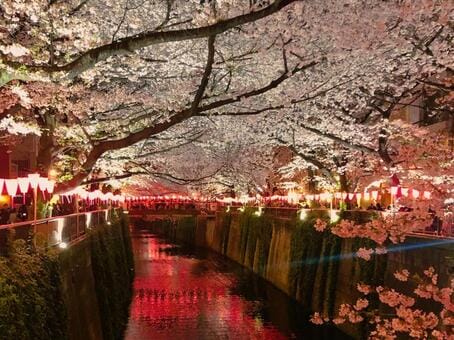
The cherry tree-lined Meguro River is one of the most popular cherry blossom spots in Tokyo. The sight of about 800 cherry trees continuing for about 3.8 kilometers along the river is breathtaking, and it's a place I visit every year without fail.
The charm of this cherry tree-lined street is the beauty of the cherry blossoms reflected on the river surface. Especially, the sight of the cherry blossom arch reflecting on the river surface is as if a world of cherry blossoms is spreading in the water as well. What I particularly like is the scenery at dusk. The colors of the cherry blossoms and the sunset reflected on the river surface create a fantastical atmosphere.
There are many cafes and restaurants lined up along the Meguro River. Also, the charm of Meguro River's cherry blossoms continues into the night. At night, you can enjoy the fantastical night cherry blossoms illuminated.
A common point to note for all spots is that the cherry blossom blooming period may vary slightly from year to year, so I recommend checking the blooming information when visiting.
Itinerary 5: Tokyo Sightseeing to Enjoy Autumn Foliage
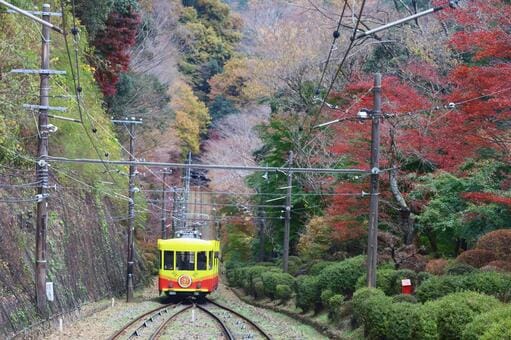
Tokyo's autumn is known for its beautiful autumn foliage. When I lived in Tokyo, I always toured this course in autumn to enjoy the Japanese autumn atmosphere. On this course, you can enjoy Tokyo's autumn foliage in various forms, from gardens in the city center to mountains in the suburbs.
Course Overview
・Order of movement: Shinjuku Gyoen → Mt. Takao
・Time required: About 8 hours (9:00 AM - 5:00 PM)
・Main modes of transportation: JR Keio Line, walking
・Recommended season: Autumn (mid-November to early December)
Shinjuku Gyoen

Shinjuku Gyoen is a garden with vast grounds in the city center, where you can enjoy beautiful autumn foliage in autumn.
The charm of Shinjuku Gyoen is that you can enjoy three styles of gardens at once: Japanese garden, French formal garden, and English landscape garden. You can enjoy different autumn foliage landscapes in each garden.
The charm of Shinjuku Gyoen also lies in the contrast between the autumn foliage and the city's skyscrapers. The scenery of the colorful autumn foliage with the high-rise buildings of Shinjuku in the distance is unique to Tokyo. When I see this scenery, I can't help but feel the strange charm of Tokyo where nature and the city coexist.
There's also a greenhouse in the garden where you can appreciate tropical plants. Even in the autumn foliage season, there's a constant summer atmosphere inside the greenhouse. Visiting the greenhouse after the autumn foliage gives you a strange feeling of traveling through seasons.
After enjoying the autumn foliage in Shinjuku Gyoen, I recommend tasting seasonal dishes at the restaurant in the garden.
Website: https://fng.or.jp/shinjuku/en/
Mt. Takao
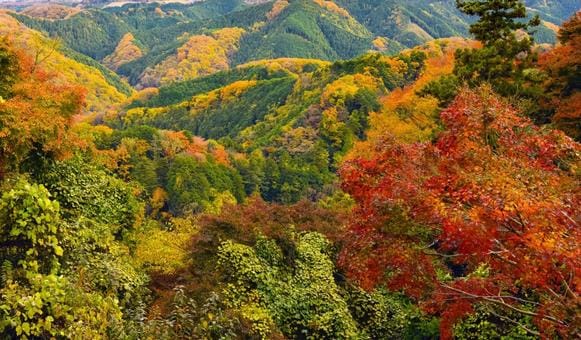
Mt. Takao is a nature-rich mountain accessible in about an hour from central Tokyo. With an elevation of 599 meters, it's popular as a mountain that even beginners can easily climb.
The autumn foliage of Mt. Takao is at its best from mid-November to early December. The sight of the entire mountain dyed in red and yellow is breathtaking. What I particularly like is the view from the cable car or lift. The sensation of advancing over a sea of colorful autumn foliage is indescribably wonderful.
The view from the summit is also exceptional. On clear days, you can enjoy a collaboration of autumn foliage and Mt. Fuji. The scenery of pure white Mt. Fuji visible beyond the trees dyed in red and yellow is truly spectacular. Every time I see this scenery, I'm moved by the beauty of Japanese nature.
After enjoying the autumn foliage on Mt. Takao, I recommend relaxing at the hot spring facility "Gokurakuyu" at the foot of the mountain. Soaking in the hot spring while viewing the autumn foliage from the open-air bath blows away the fatigue of the day. I always looked forward to concluding the day here.
Website: https://www.takaotozan.co.jp/
The best time to see autumn foliage may vary slightly from year to year, so I recommend checking the autumn foliage information before visiting any of these spots.
Frequently Asked Questions About One Day Trips in Tokyo
Finally, I'll answer some common questions about Tokyo sightseeing from a local's perspective.
What's the Recommended Season for a One Day Trip in Tokyo?

Tokyo is basically a city that can be enjoyed year-round, but each season has its characteristic charm. Based on my experience, I'll tell you about the features of each season.
Spring (late March to early April) is the most popular as the cherry blossom season. You can enjoy beautiful cherry blossoms in many places such as Ueno Park and Meguro River.
Summer (July to August) is when many fireworks displays and summer festivals are held. In particular, the Sumida River Fireworks Festival is spectacular, attracting about 1 million people every year. Also, traditional summer festivals held in places like Asakusa and Kanda Myojin are ideal for experiencing Japanese culture.
Autumn (October to November) is popular as the autumn foliage season. You can enjoy beautiful autumn foliage in various places from the city center to the suburbs, such as Shinjuku Gyoen and Mt. Takao. Also, the temperature during this time is comfortable, making it ideal for sightseeing.
Winter (December to February) is when illuminations decorate the city. Enjoying illuminations on a cold night with a warm drink in hand is a unique enjoyment of winter in Tokyo. Also, I recommend experiencing Japanese traditional events such as the New Year's Eve bell ringing on December 31 and the first shrine visit of the year on January 1.
Personally, I recommend spring and autumn. The climate is mild and easy for sightseeing, and you can enjoy Japanese-like scenery such as cherry blossoms and autumn foliage. However, these seasons are also crowded with tourists, so I recommend visiting on weekdays if you want to avoid crowds.
What Dishes Should I Definitely Try During Tokyo Sightseeing?

Tokyo is the center of Japanese food culture, and you can enjoy various delicious dishes. From my experience, I'll introduce some particularly recommended dishes.
First, you can't miss sushi. You can enjoy fresh sushi at Tsukiji Outer Market or Toyosu Market. You can also enjoy high-end sushi listed in the Michelin Guide in Ginza.
Ramen is also one of Tokyo's specialties. Tokyo has ramen from all over Japan, offering a wide range of choices.
Monjayaki is a specialty dish of Tokyo, especially Tsukishima. This dish, which can be called the Tokyo version of okonomiyaki, is fun to cook yourself on an iron plate.
Tempura is another dish I'd like you to taste in Tokyo. Tempura using seasonal vegetables and seafood has an exquisite balance between the crispy batter and the taste of the ingredients. In particular, the experience of enjoying freshly fried tempura while watching the chef's skills up close at a counter seat is exceptional.
What Are Some Unique Experiences Popular Among Foreigners in Tokyo?
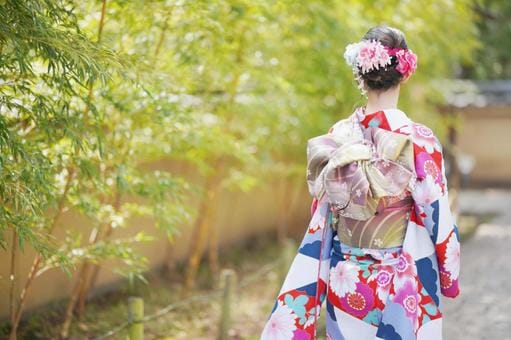
There are many unique experiences popular among foreign tourists in Tokyo. I'll introduce some places and experiences I often guide friends when they come from overseas.
Capsule hotels are popular as a unique Japanese accommodation experience. Some people are initially hesitant about sleeping in a small space, but many are surprised at how comfortable it actually is. It's also interesting to experience Japan's efficiency-oriented culture.
Renting yukata or kimono is also very popular among foreign tourists. My friends really enjoyed strolling around Asakusa in kimono. Wearing traditional Japanese clothing and walking around the city gives you a feeling of being in a historical drama.
Lastly, experiencing a maid cafe in Akihabara is also popular. You can have an experience that condenses Tokyo's pop culture, with cute uniforms, unique language usage, and various services.
These experiences are all unique to Japan, especially Tokyo. I hope tourists will feel the diverse charms of Tokyo through such unique experiences.
As introduced so far, Tokyo has numerous tourist attractions. While they are all attractive, the fact is that with so many places to visit, it's difficult for first-time visitors to tour efficiently.
As a special tip for those who have read this far, I'll introduce a highly recommended tour for people who want to enjoy Tokyo tourism easily yet deeply. By joining this tour, you can travel stress-free in a private car, visiting only the tourist spots you like, allowing you to fully enjoy Tokyo sightseeing in just one day.
・1-Day Tokyo Highlights Tour with a Private Car and Guide

The five itineraries introduced in this article are structured to allow you to experience different charms of Tokyo.
A course that tours standard tourist spots, a course that enjoys nature and urban culture, a course that enjoys old townscapes, and season-limited courses that enjoy spring cherry blossoms and autumn foliage. I think you can fully taste Tokyo's diverse charms through these courses.
Tokyo is a city that continues to change, but there are unchanging traditions and charms within it. I hope you'll create your own Tokyo sightseeing plan referring to the courses and experiences introduced in this article. Have a wonderful trip in Tokyo!
